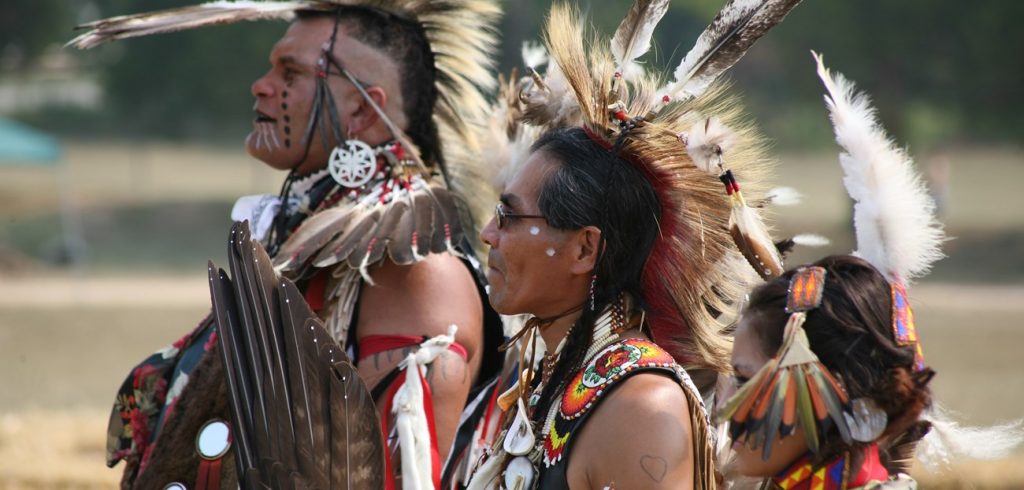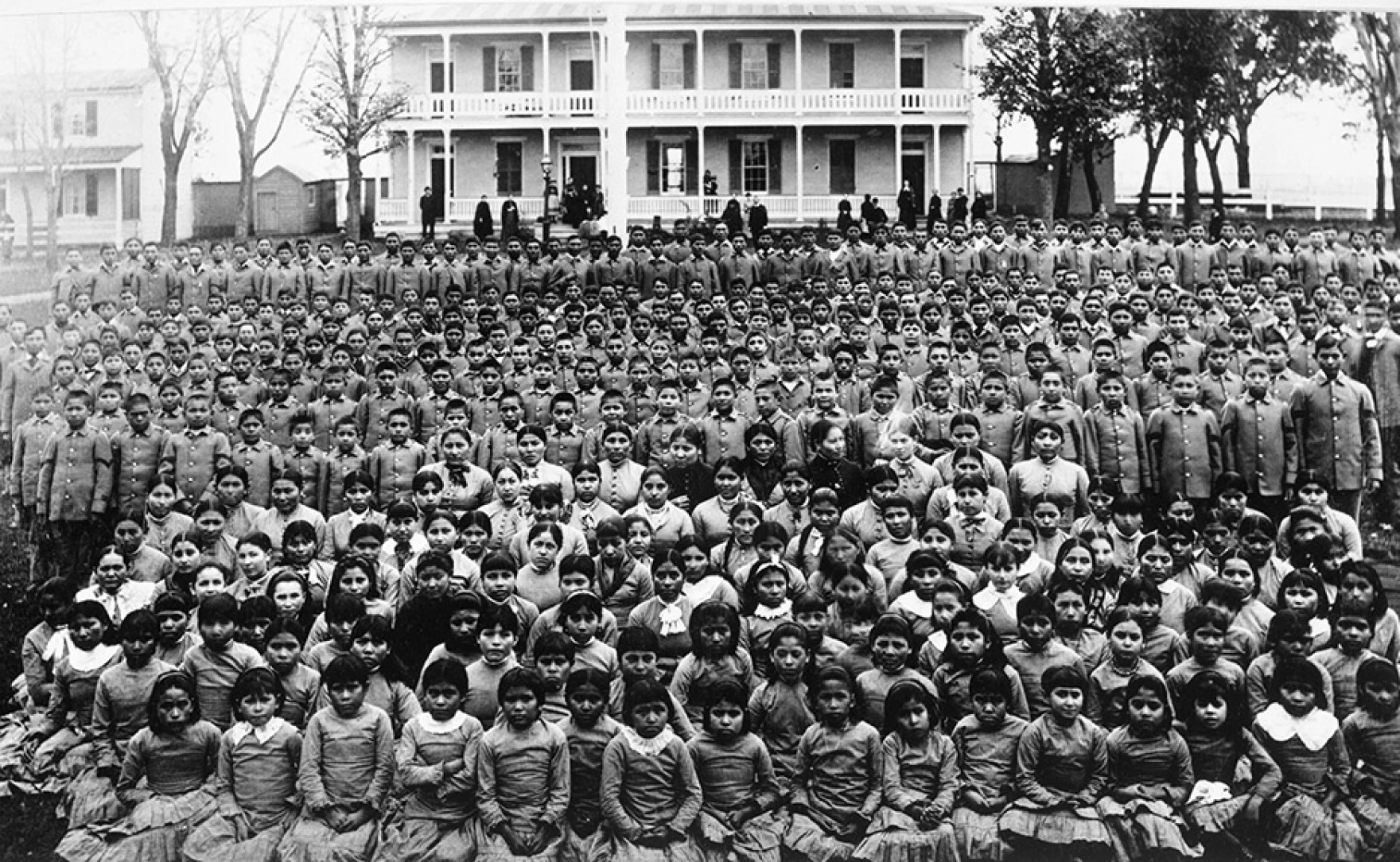
Long before disease and colonialism plagued Pennsylvania, native people lived on the land surrounded by greenery and fruitful resources. The initial inhabitants of the land that is now Pennsylvania included Iroquois, Munsee Delaware, Lenape Delaware, Erie, Shawnee, and Susquehannock.
Within the abundance of Native American history in Pennsylvania lies a plethora of tragedies and injustices. In David Minderhout’s book Invisible Indians, he explains events such as the Walking Purchase and the Carlisle Industrial School “are used to explain lost identities or uncertain family histories (e.g., ‘it wasn’t safe to call yourself an Indian’) or a renewed sense of being Native Americans (e.g., ‘my grandmother was at Carlisle…’)”.

In the Walking Purchase of 1737, a document possessed by Thomas Penn indicated the sale of the land north of Tohickon Creek on the Delaware River to William Penn. In the document, the quantity of land was to be measured by a day and a half’s walk beginning at an agreed-upon starting point. When the “walk” began, walking turned to running, and ultimately, the officials of Pennsylvania defrauded the Delaware tribe out of almost a million acres of land and dispossessed the people.
In the following decades, through wars, murder, and deception, Native Americans in Pennsylvania were quietly disposed of. By the 1790s, only a small group of Senecas remained in Cornplanter’s town in Pennsylvania until the construction of the Kinzua Dam in the 1960s required the members to move to Seneca reservation lands in New York. Sean Daley notes, “They got run out so they could put a damn on their land and flood it.” Dr. Daley explained the land belonging to the Senecas was legally theirs. It was given to them by George Washington, “and the federal government didn’t intervene, which we see happening a lot even today, the federal government won’t intervene on issues.”
Unfortunately, the disrespect towards Native Americans in Pennsylvania did not stop with displacement. Opening its doors in 1879, the Carlisle Indian Industrial School had one goal: forced assimilation. Thousands of American Indian children were sent to this “school” with military-style discipline and the bereavement of their culture. Hundreds of children died at this school due to the despicable conditions.

Flash forward to modern Pennsylvania, a state long ago home to many Native American tribes. Today, there are no federally or state-recognized Indian tribes in Pennsylvania. Sean Daley at the Lehigh Institute for Indigenous Studies explains, “There is no federally recognized tribes in Pennsylvania, there’s no reservation land, there’s no tribal status land, there’s no tribal trust land, [and] there’s no state-recognized group.”
Despite lack of recognition, according to the US Census Bureau, 20,570 Native Americans lived in Pennsylvania in 2022. Near the shore of a reservoir in the southern Poconos, drums, and sage fill the nearby air where a powwow can be found of a community of people who ascertain connections to the Lenape tribe. The Lenape Nation of Pennsylvania continues to maintain a modern presence in Pennsylvania and fight for recognition from the government. To attain recognition from the federal government requires hefty costs, verifying its existence as a tribal establishment, and proving political influence among its members since the 1900s or earlier. Yet, the Delaware Tribe of Indians asserts there are no Lenape individuals outside of its membership, and the four other nations also recognized by the federal government. Federal tribes consider state-recognized organizations fabricated. Dr. Daley speaks about federal recognition, saying, “Federally recognized groups have either what’s called a blood quantum or lineal descent… So tribes will either do blood quantum, meaning you have to have a certain amount of ancestry, or you have to have a relative on a role. And usually, they’ll determine that role.” However, Daley recognizes it gets complicated with death and marriage certificates getting lost.
Daley feels the recognition should be handled by the federal government. “I’m on the side of the argument that this s*** needs to be done by the feds. So if anything, the feds need to get their s*** together, which they always do anyway, and actually deal with this.”
Interview Clips
https://mediaspace.bucknell.edu/media/Introduction+with+Sean+Daley/1_nud7rhft
https://mediaspace.bucknell.edu/media/Clip+From+Interview+With+Sean+Daley/1_qt8aaphh
Works Cited/ Suggested Readings
Minderhout, D., & Frantz, A. (2008). Invisible Indians: Native Americans in Pennsylvania. Human Organization, 67(1), 61–67. http://www.jstor.org/stable/44127040
Minderhout, D. J., & Frantz, A. T. (2008). Invisible Indians: Native Americans in Pennsylvania. Cambria Press.
Hayburn, T. (n.d.). Walking Purchase. The Encyclopedia of Greater Philadelphia. https://philadelphiaencyclopedia.org/essays/walking-purchase/
Millersville University (n.d.). Native Americans in Pennsylvania. PA Maps. https://mapmaker.millersville.edu/pamaps/NativeAmericans/#background
Yu, J. (n.d.). Kill the Indian, Save the Man. Pennsylvania Center For The Book. https://pabook.libraries.psu.edu/literary-cultural-heritage-map-pa/feature-articles/kill-indian-save-man
National Park Service (n.d.). The Carlisle Indian Industrial School: Assimilation with Education after the Indian Wars (Teaching with Historic Places). NPS. https://www.nps.gov/articles/the-carlisle-indian-industrial-school-assimilation-with-education-after-the-indian-wars-teaching-with-historic-places.htm
Spengler, S. (2021, November 6). For Years, People Said There Were No Lenape Left in Pennsylvania. This Group Begs to Differ. Philadelphia Magazine. https://www.phillymag.com/news/2021/11/06/lenape-nation-pennsylvania/
Comments